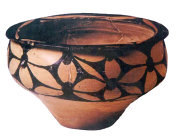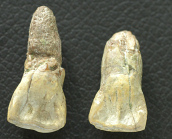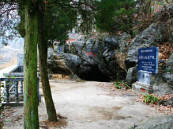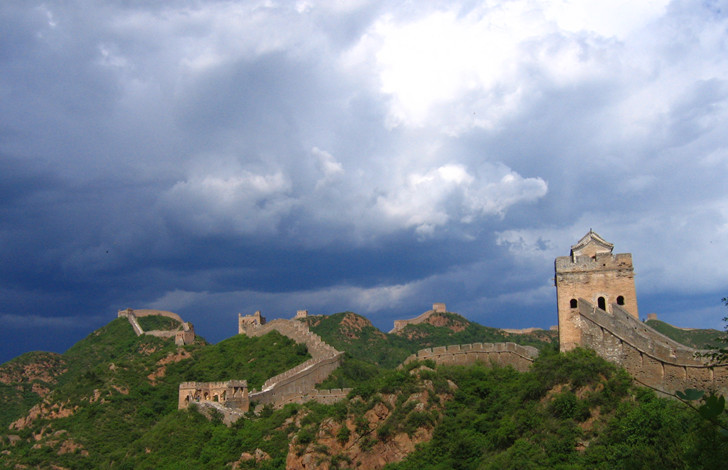
China Overview
- Population: 1.3 billion
- Currency: yuan
- Guinness World Records: most people painting each other's faces simultaneously in one location (13,413), largest bottle of cooking oil (containing 3212 litres), most couples hugging (3009 couples).
- Internet users: 135 million
- Milk beer: from Inner Mongolia, an alternative to the traditional mare's-milk wine.
- Squirrel fish: whole mandarin fish deep-fried and manipulated to resemble a squirrel.
- Number of chinese characters: over 56,000
Prehistory times
China’s prehistory times represents the time when there was not any official historical record about human history. It can be traced back to 1.6 million BC until the 21 century BC, the establishment of Xia Dynasty. The prehistory times is also known as the Primitive Society or the Stone Age. |
| What are the periods of Chinese prehistory times? |
Chinese prehistory times can be divided into three periods: the Paleolithic Age, the Mesolithic Age and the Neolithic Age. |
| The Paleolithic Age |
The Paleolithic Age or Old Stone Age is the earliest history of human beings characterized by the use of rudimentary chipped stone tools. At that time, the uncivilized people were gregarious, living in the caves and living on wild animals, wild fruit, fish and even tree leaves and grass. Farming and stockbreeding didn't come into being. During the period, human beings evolved from ape-man to Homo erectus, through Homo sapiens, and then finally formed the shape of the modern man. In addition, the people discovered fire, and learned to use the natural fire in their daily lives, which helped to improve people's physical qualities and living condition significantly. |
| The Neolithic Age |
The Neolithic Age, the last period of the Stone Age is a new starting point in China's ancient economy and culture. Marked by the emergence of farming and stockbreeding, humanity graduated from depending on nature to transforming nature. People began to live a settled life and use grinding stone tools. Meanwhile, the skills of making pottery and spinning were developed, and paintings, characters, sculptures, music and dances all began to appear. Relics of the Neolithic Age are found throughout China, some of which are still intact in villages in places such as Yangshao and Longshan Cultural Areas of Yellow River watershed and the Hemudu Cultural Area of Yangtze River watershed. |
| What marks the end of prehistory times? |
A legend has it that the Emperor Yellow (Huang Di), lived about 4,000 years ago was the head of the tribal confederation along the Yellow River watershed. He led his people against a clan headed by Emperor Yan (Yan Di), and then they formed an alliance that became the origin of the Chinese people.After Emperor Yellow, Yao and Shun were successively elected as the leaders of the Yellow River watershed. Later, Yu was made as the leader because he made great contributions in controlling the floods. However, Qi, the son of Yu, abolished the Abdication System and replaced it with a Hereditary System, made himself king, and established Xia Dynasty, the first dynasty in Chinese history. The introduction of the Hereditary System is a clear indicator that the Prehistoric Times of China had ended and China had entered into her Ancient Civilization era. |
Yangshao Culture
Yangshao Culture occurred in the late period of Neolithic Age (about 4,950 to 6,950 years ago). It was first discovered in Yangshao village of Mianchi City, Henan Province, hence the name. |
|
Yangshao Culture saw the flourish of pottery making. At that time, pottery workshops were distributed along the banks of the Yellow River, centering on Henan Province and the Central Plain of Shaanxi Province. All the pottery objects of this period appeared in red color, because the local clay of which they were made contained a high percentage of ferrous compounds that turned red after oxidation under high temperature. Hence, Yangshao Culture is often referred to as Painted Pottery Culture. The most striking piece is a basin with a design of human face and fish out of Banpo village in the neighborhood of Xi'an, Shaanxi Province. On the other hand, Yangshao Culture marks a great leap forward in construction. Primitive villages were found in a neat and orderly arrangement on the site of Jiangzhai at Lingtong County, Shaanxi Province. In the center of the living quarter is a large open ground. Buildings are scattered around it in five groups. In the middle of each group stands a big house with ten or a score of houses arranged nearby. Two big moats, two meters (6.56 feet) or so both in width and depth, envelope the whole area as ancient defensive works. Outside of the moats, there discovered three graveyards and about 170 adult tombs. Children's burial jars were found close to houses. | |
Yuanmou Man On May 1st 1965, Chinese scientists found two teeth and some coarse stone tools near Danawu Village in Yuanmou County, Yunnan province. Scientists identified that those were leftovers from primeval humankind, about 1.7 million years ago. They are called "Yuanmou Man". They were the ever known earliest humankind that lived in China. | |
In later excavations, Yuanmou animals of early Pleistocene period, such as Yunnan horse, saber tooth tiger, and saber tooth elephant, were unearthed together with stone tools and coal ash. Archaeologists also discovered in the Yuanmou Basin signs of glacier movements during the 4th Geological Age. |
|
Lantian Man In 1936, the first fossil of Lantian Man was excavated in Lantian County, 50 kilometers southeast of Xi'an. Lantian Man was found in two locations -- Gongwangling and Chenjiawo at Lantian in Shaanxi Province. Both fossils were classified as female, while the remains were thought to be about 800,000 – 530,000 years old, or as old as Java man, an early form of Homo erectus, and older than Peking Man.Lantian Man was a Homo erectus of the early Paleolithic Age and was able to make and use rough stone tools to obtain a simple means of living. From the human fossil layer, numerous stone artifacts such as heavy points, choppers and scrapers were found. These objects were made using simple percussion, and during the age of Lantian Man, there were about forty-one types of wild animals. |
Changyang Man Changyang Man was found in the valley of Qingjiang River, a tributary on the middle reaches of the Yangtze River. The finding comes from a large-scale excavation launched in the Qingjiang River Valley in 1980s. The tooth fossils were confirmed belonged to humans dating back between 2.15 and 1.95 million years ago. |
|
Archaeologists discovered three human tooth fossils in one mountain cave in Mazhaping Village, in the Gaoping Township of Jianshi County, western Hubei Province. They also found pieces of lithic technology and evidence of fire usage in Minor Cave in Banxia. There were similar findings in Nianyu Mountain and in Zhadong Cavein Banxia, all in Changyang Prefecture of the Qiangjiang River Valley. The archaeologists also found fossils of bone implements in thecultural strata at the ruins where the human tooth fossils were discovered. | |
Peking Man Between 1929 and 1937, 14 partial skulls, 11 lower jaws, many teeth, some skeletal bones and large numbers of stone tools were discovered in the Lower Cave at Peking Man site at Zhoukoudian, near Beijing. Their age is estimated to be between 500,000 and 300,000 years old. | 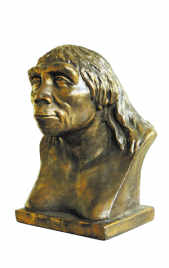 |
All Topics about China
- General-China-Introduction
- C2-Chinese-History
- Chinese-Religions
- Chinese-Food-and-Drink
- Chinese-Literature
- Chinese-Nationality
- Chinese-Architecture
- Chinese-Arts-and-Crafts
- Chinese-Language-and-Education
- Chinese-Medicine
- Chinese-Transportation
- Chinese-Festival
- Chinese-Astrology-and-Zodiac
- Chinese-Calendar
- Chinese-Traditional-Sports-&-Activities
- Chinese-Martial-Arts
HOTMost Popular Topics
Climate in China
Because of its size, China has great climatic diversity. Generally, the best time to visit China is during spring and autumn.
Chinese-Language-and-Education
Chinese is the most commonly used language in China, and one of the most commonly used languages in the world.
Chinese-Festival
China has many traditional festivals, including the Spring Festival, the Lantern Festival, the Dragon Boat Festival.
Chinese Chinese-Astrology-and-Zodiac
In the Chinese zodiac, twelve animals are used to denote the year of a person's birth: rat, ox, tiger, rabbit, dragon.
History of China
China, one of the world's most ancient civilizations, has a recorded history of nearly 4,000 years..
